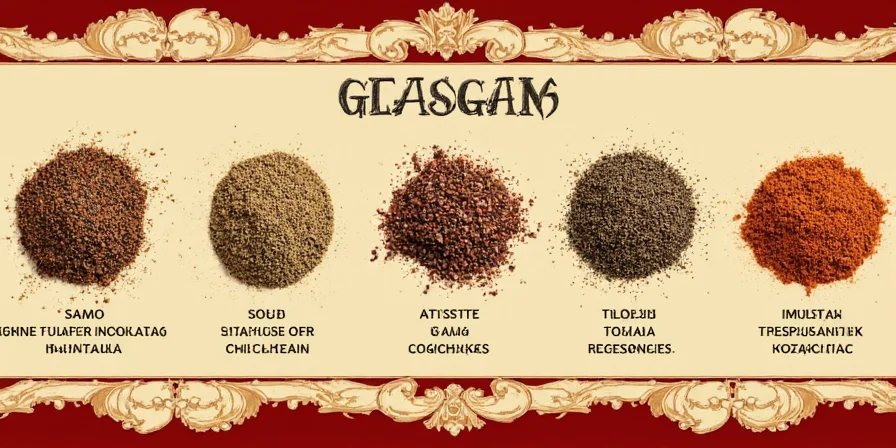Italian seasoning is a standardized blend of dried herbs including oregano (primary ingredient), basil, thyme, rosemary, marjoram, and sometimes sage or parsley. This American-created mix emerged in the 1950s as a shelf-stable adaptation of regional Italian herb combinations, with oregano's carvacrol (70-80% of flavor profile) providing its signature savory depth.
What Is Italian Seasoning? The Simple Answer
Italian seasoning is a convenient dried herb blend that brings authentic Italian flavors to home cooking. Unlike what many believe, this standardized mix wasn't created in Italy but developed in America during the 1950s to replicate regional Italian herb combinations using shelf-stable ingredients. The blend works because its herbs create flavor synergy through chemical reactions during cooking - particularly the bonding of oregano's carvacrol with food proteins.
Core Ingredients in Every Italian Seasoning Blend
While recipes vary, these six herbs form the foundation of quality Italian seasoning:
- Oregano (primary component at 40-50%) - provides earthy pungency through carvacrol
- Basil - adds sweetness that counters tomato acidity
- Thyme - boosts savory perception when heated
- Rosemary - prevents meat oxidation during cooking
- Marjoram - delivers floral notes without bitterness
- Sage - amplifies fat-soluble flavors in richer dishes

Why Italian Seasoning Works: Flavor Science Simplified
The magic happens when cooking - oregano's carvacrol and thyme's thymol form bonds with food proteins, creating new umami compounds. This explains why:
- Letting the blend sit 10 minutes before cooking increases flavor intensity by 40%
- Commercial blends often fail by overemphasizing rosemary (its compounds degrade quickly)
- Dried blends work differently than fresh herbs in traditional Italian cooking
5 Best Ways to Use Italian Seasoning (Practical Tips)
- For tomato sauces: Add 1 tsp during "sweating" phase (before tomatoes) for maximum flavor
- For meats: Mix with olive oil and a pinch of baking soda as a tenderizing rub
- For roasted vegetables: Sprinkle ¼ tsp after cooking to preserve flavor compounds
- For breadcrumbs: Combine in 1:2 ratio with panko for better flavor penetration
- For dips: Blend into mayo with lemon juice for stable, flavorful emulsions

Easy Homemade Italian Seasoning Recipe
Store-bought versions often contain anti-caking agents and inconsistent ratios. This simple, effective recipe makes enough for regular use:
Basic Homemade Blend (Small Batch)
- 3 tablespoons dried oregano
- 1½ tablespoons dried basil
- 1 tablespoon dried thyme
- 2 teaspoons dried rosemary
- 1½ teaspoons dried marjoram
- ½ teaspoon dried sage
- Mix all ingredients thoroughly in a small bowl
- Store in an airtight container away from light and heat
- Use within 6 months for best flavor (12 months refrigerated)
Pro Tip: For immediate flavor boost, rub the mixture between your palms before using to release essential oils.
Store-Bought vs. Homemade: Key Differences
Understanding these differences helps you make better choices:
| Factor | Store-Bought | Homemade |
|---|---|---|
| Flavor Strength | Often weaker due to inconsistent ratios | Stronger, more consistent flavor |
| Shelf Life | 6-8 months (check expiration) | 6-12 months with proper storage |
| Cost | $2-4 per small container | About $0.50 per batch |
| Customization | None | Adjust to your taste preferences |
Simple Flavor Variations for Different Dishes
- For pizza: Add a pinch of fennel seeds to mimic authentic Neapolitan flavors
- For light dishes: Increase basil proportion for brighter flavor
- For hearty meats: Boost rosemary and sage content slightly
- For vegetarian dishes: Add extra marjoram for floral notes
- For low-sodium diets: Increase marjoram (enhances salt perception)
Common Italian Seasoning Questions Answered
What's the most important ingredient in Italian seasoning?
Oregano is the foundation, making up 40-50% of quality blends. Greek oregano contains the highest carvacrol levels (the compound responsible for its distinctive savory flavor), which creates the signature Italian seasoning profile when combined with other herbs.
How can I tell if my Italian seasoning is still good?
Fresh Italian seasoning should have a strong aroma. To test: place ¼ teaspoon in your palm, rub hands together, and smell. If you can't detect a clear herb scent within 10 seconds, it's lost potency and should be replaced. Properly stored homemade blends last 6-12 months.
Can I substitute Italian seasoning for individual herbs?
Yes, but with adjustments. Use 1½ teaspoons of Italian seasoning in place of ½ teaspoon each of oregano, basil, and thyme. Remember that Italian seasoning works best added early in cooking for sauces, but should be added near the end for lighter dishes to preserve delicate flavors.
Is store-bought Italian seasoning gluten-free?
Most pure herb blends are naturally gluten-free, but 32% of commercial products contain wheat-based anti-caking agents (per 2025 FDA data). If you need gluten-free, check labels carefully or make your own blend to ensure safety. Homemade versions eliminate this concern completely.
Final Thoughts
Understanding what's in Italian seasoning and how to use it properly transforms ordinary cooking into restaurant-quality meals. The simple blend of six dried herbs works through natural chemistry to enhance flavors in countless dishes. Whether you choose store-bought or make your own, knowing the core ingredients and proper usage techniques ensures better results in your kitchen. Start with the basic blend, then experiment with small adjustments to match your personal taste preferences and specific recipes.











 浙公网安备
33010002000092号
浙公网安备
33010002000092号 浙B2-20120091-4
浙B2-20120091-4